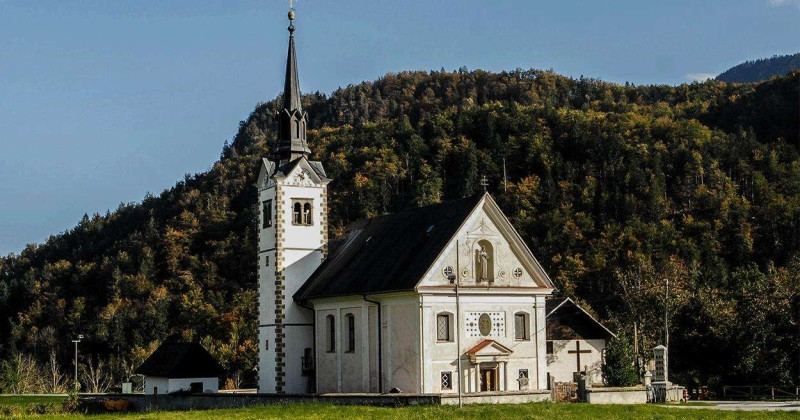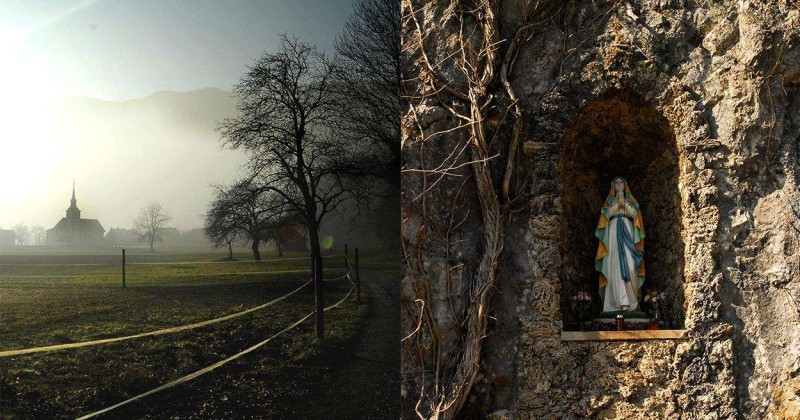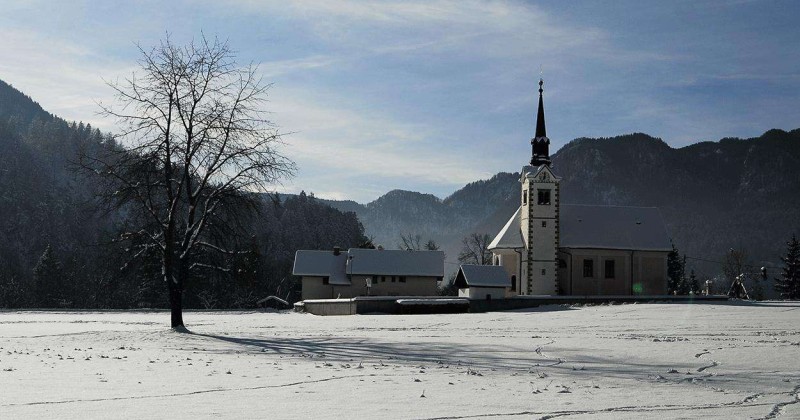The church of St. Margaret
On the edge of the village stands St. Margaret's parish church, which was originally built in the Renaissance style (at the beginning of the 17th century), but was baroqueised a century later. Anton Jebačin contributed the wall paintings in 1907.
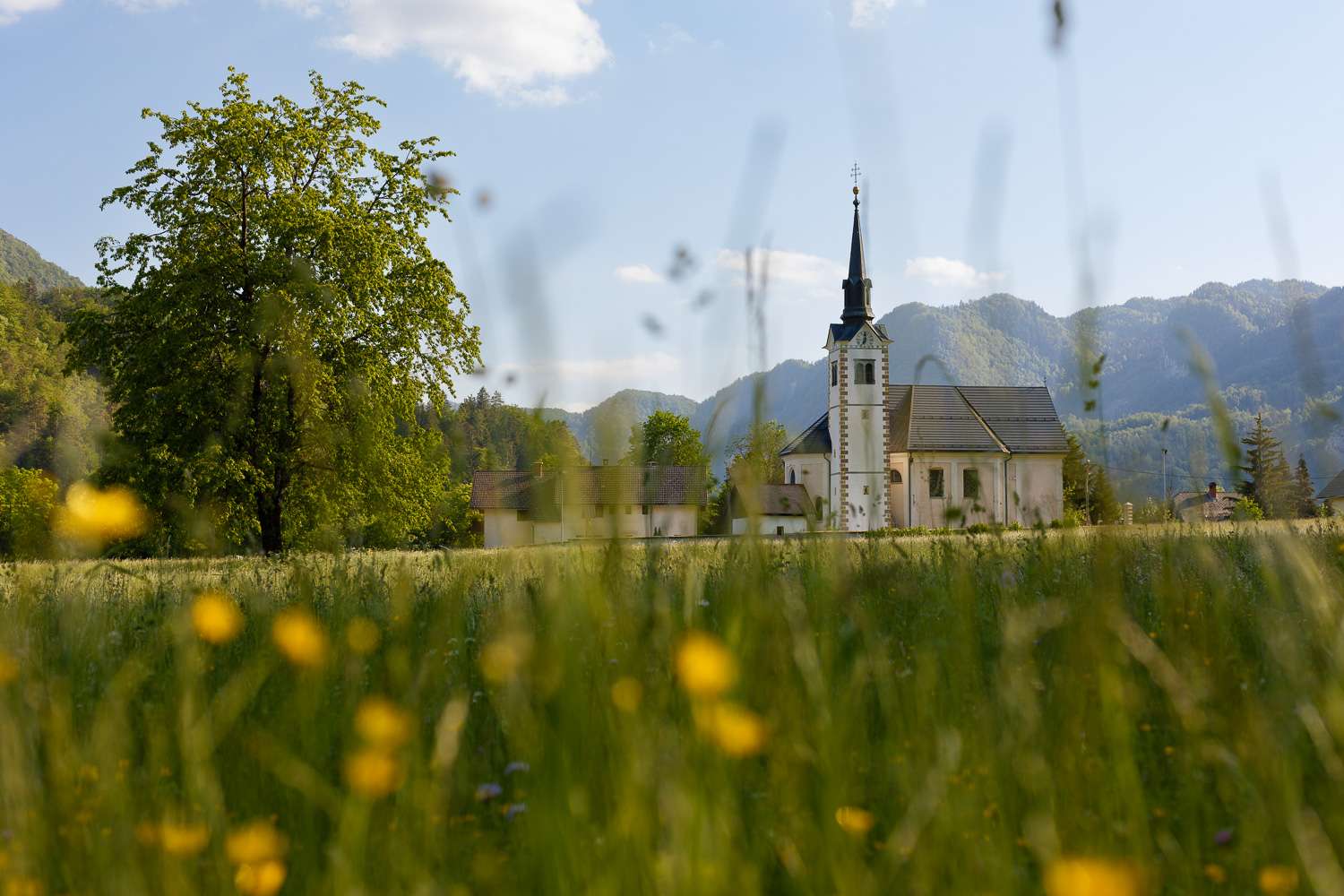
 The interior of the church following renovation in 1970 is the work of the architect Janez Fȕrst from Ljubljana.
The interior of the church following renovation in 1970 is the work of the architect Janez Fȕrst from Ljubljana.
The change in the liturgy according to the guidelines of the Second Vatican Council triggered changes in the architecture and furnishings of churches in many places. The new sacrificial altar now faces the congregation, the tabernacle is on the right and the baptismal font on the left. The church features ancient paintings and statues.
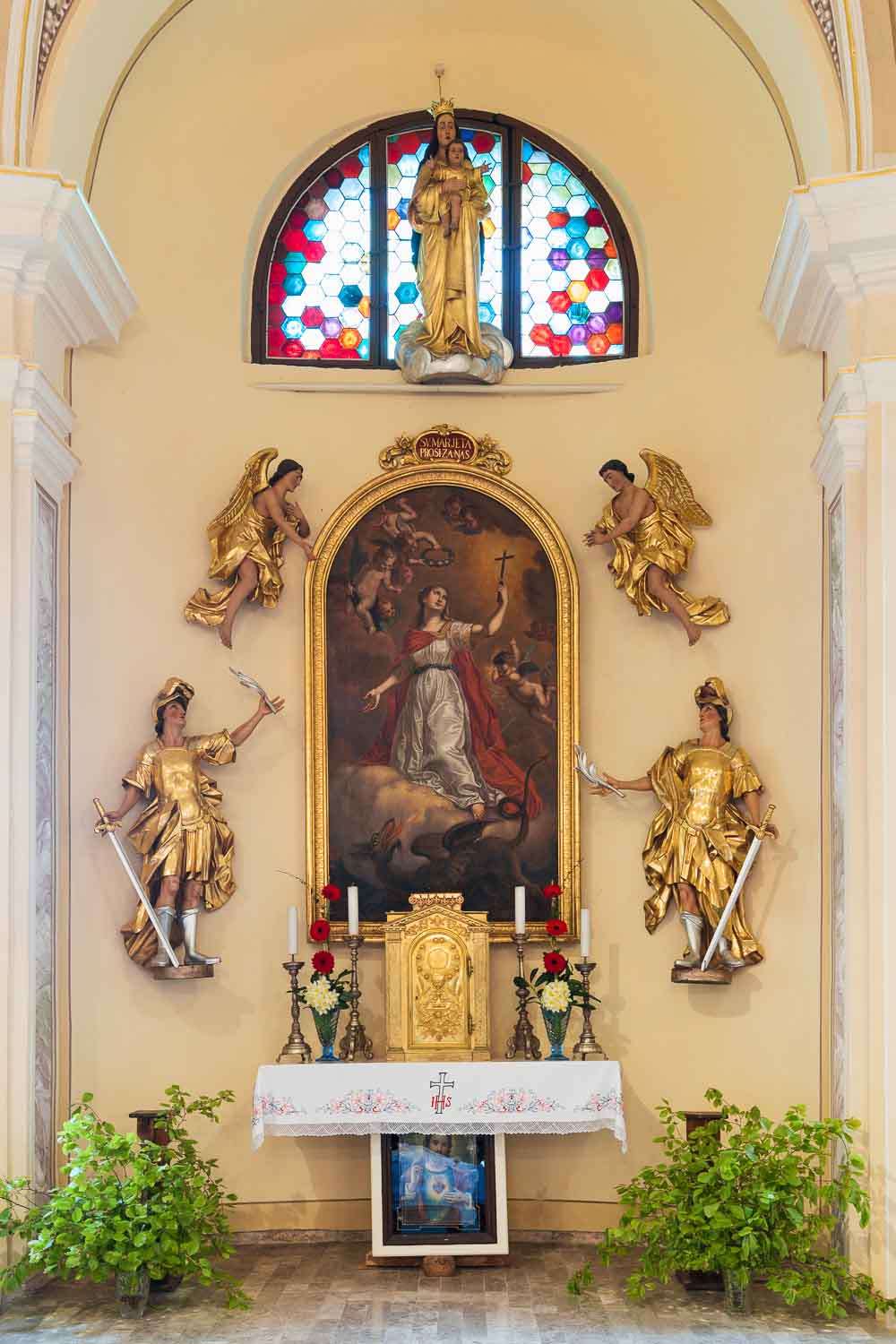 The main altar with a painting of St. Margaret, which was painted by Matevž Langus in1850. Statues beside the altar: Mary Help of Christians above the painting, next to her St. John and St. Paul, Roman soldiers and martyrs from the 4th century.
The main altar with a painting of St. Margaret, which was painted by Matevž Langus in1850. Statues beside the altar: Mary Help of Christians above the painting, next to her St. John and St. Paul, Roman soldiers and martyrs from the 4th century.
 The first side altar features a picture of Archangel Michael, above it hangs a picture of Our Lady of Sorrows, while to the side are statues of Archangels Gabriel and Raphael.
The first side altar features a picture of Archangel Michael, above it hangs a picture of Our Lady of Sorrows, while to the side are statues of Archangels Gabriel and Raphael.
 The other side altar features a picture of Virgin Mary, painted in 1894 by Simon Ogrin from Vrhnika; above it there is a picture of St. Roch, with statues of St. Isidore and St. Notburga.
The other side altar features a picture of Virgin Mary, painted in 1894 by Simon Ogrin from Vrhnika; above it there is a picture of St. Roch, with statues of St. Isidore and St. Notburga.
The altars are decorated with hand-sewn tablecloths, which were a gift from local women
who are active in the local Society of Rural Women and Girls. Tablecloths with bobbin lace
were made and donated to the church in Bohinjska Bela by Breda Jamar.
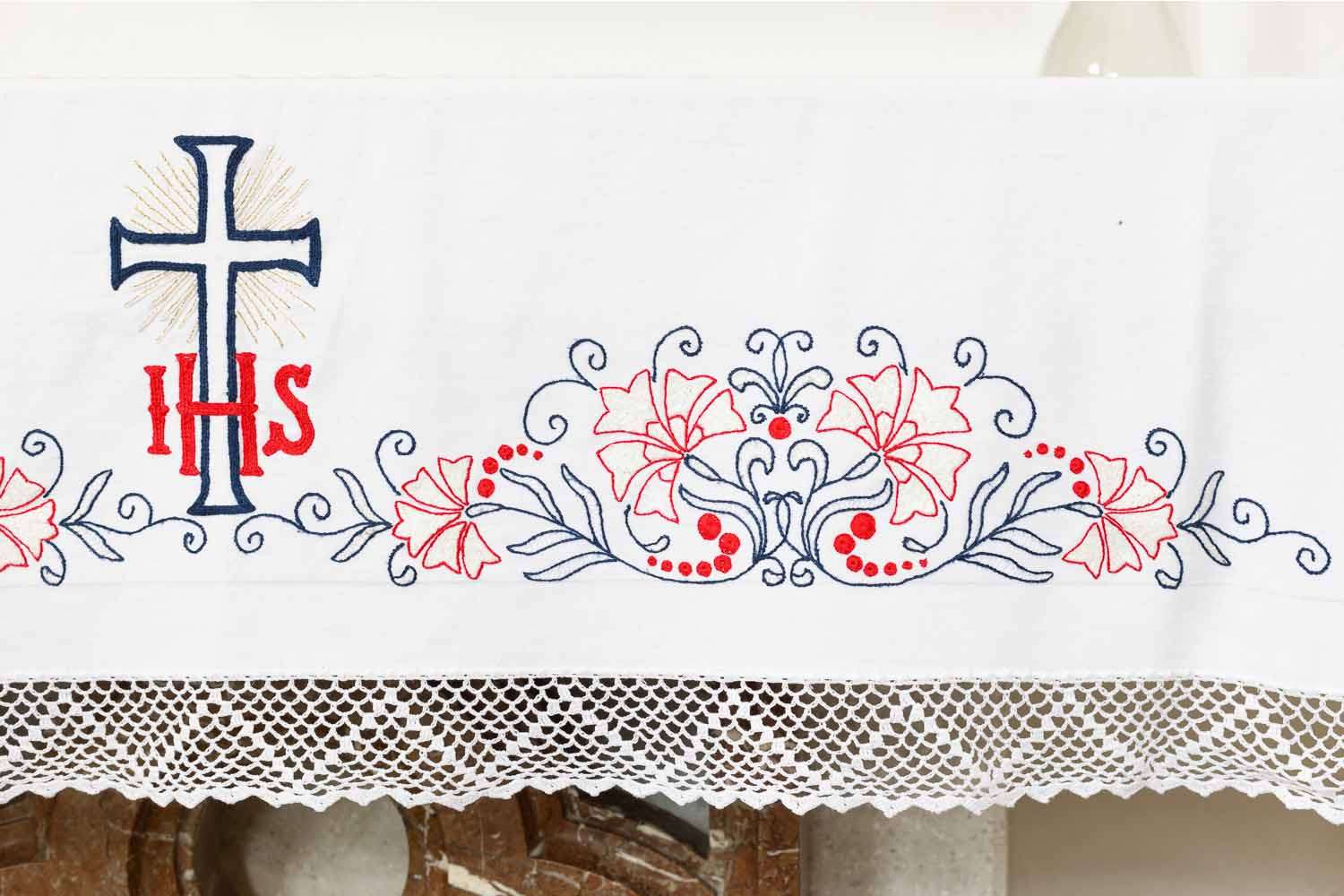
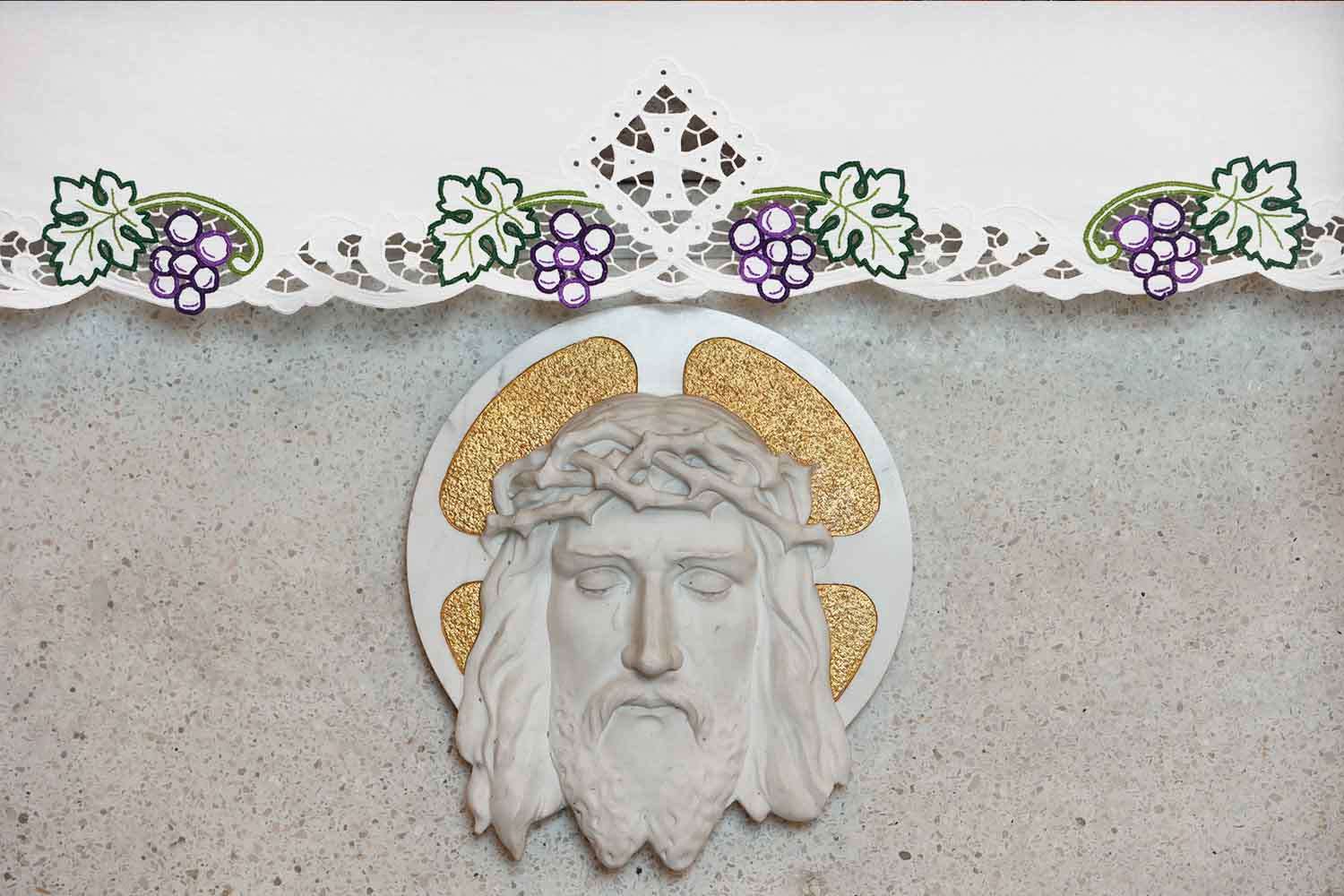 The painter Anton Jebačin from Ljubljana painted the ceiling frescoes in 1907.
The painter Anton Jebačin from Ljubljana painted the ceiling frescoes in 1907.
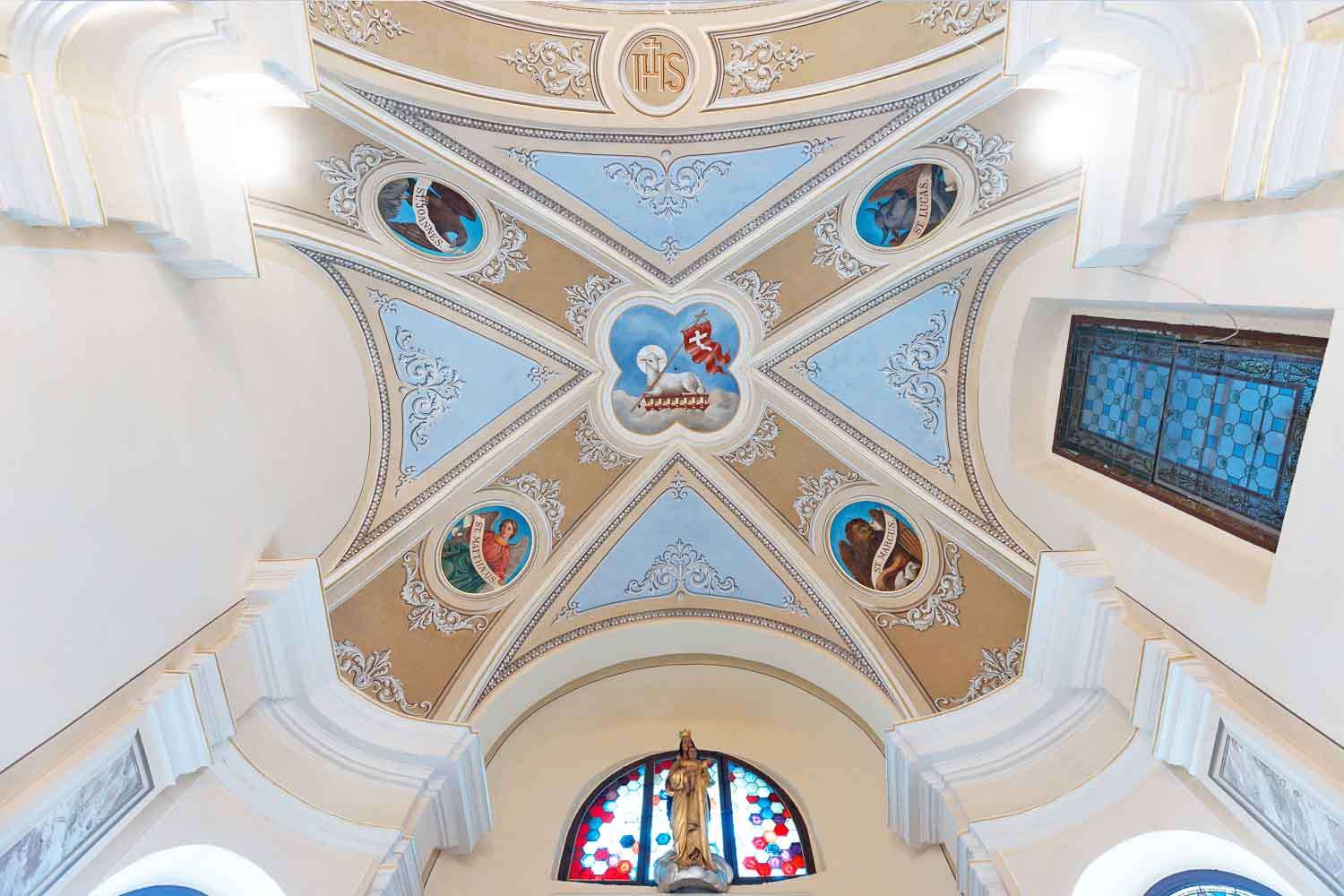 The ceiling of the presbytery shows four evangelists.
The ceiling of the presbytery shows four evangelists.
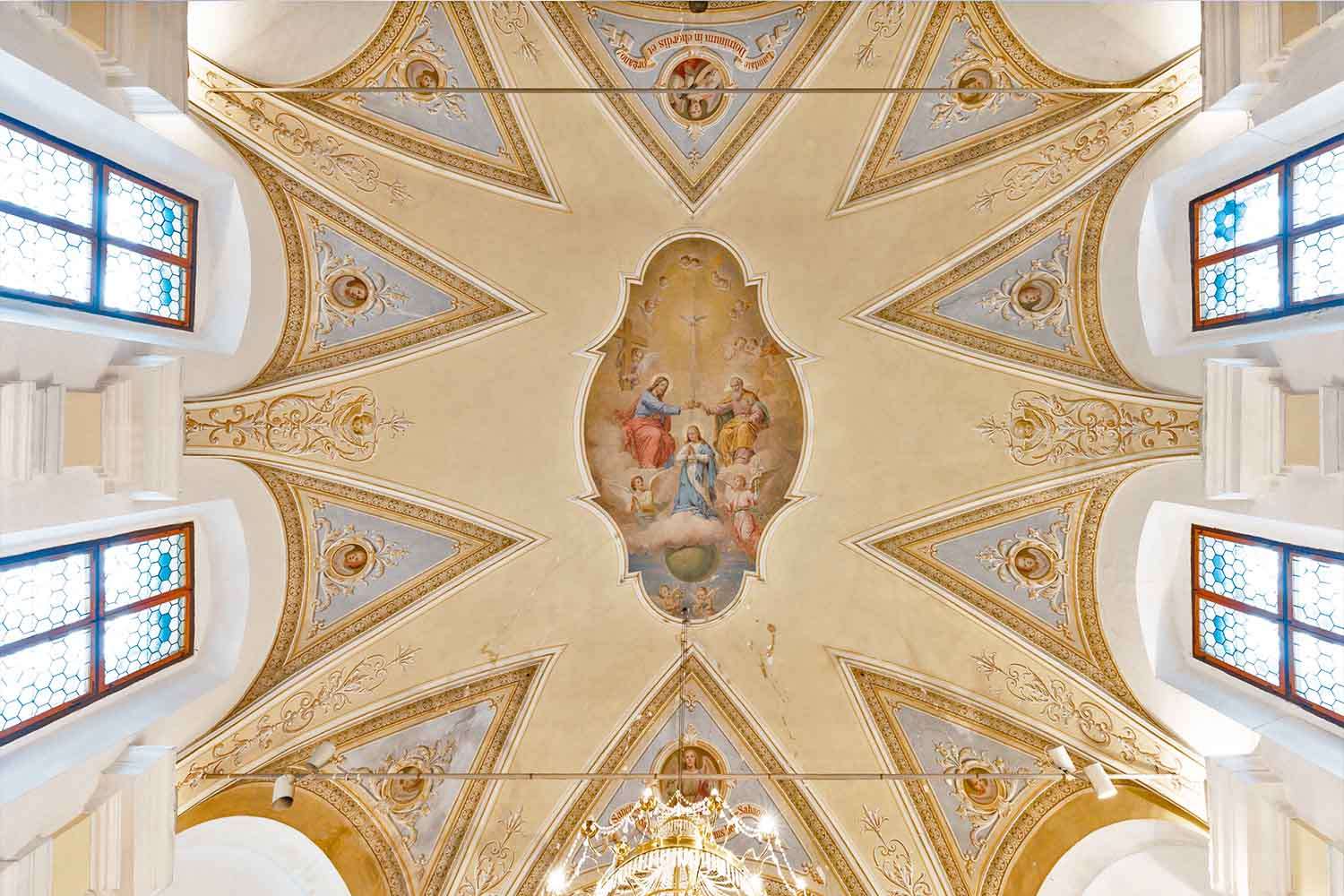 The ceiling of the nave depicts the Coronation of Mary.
The ceiling of the nave depicts the Coronation of Mary.
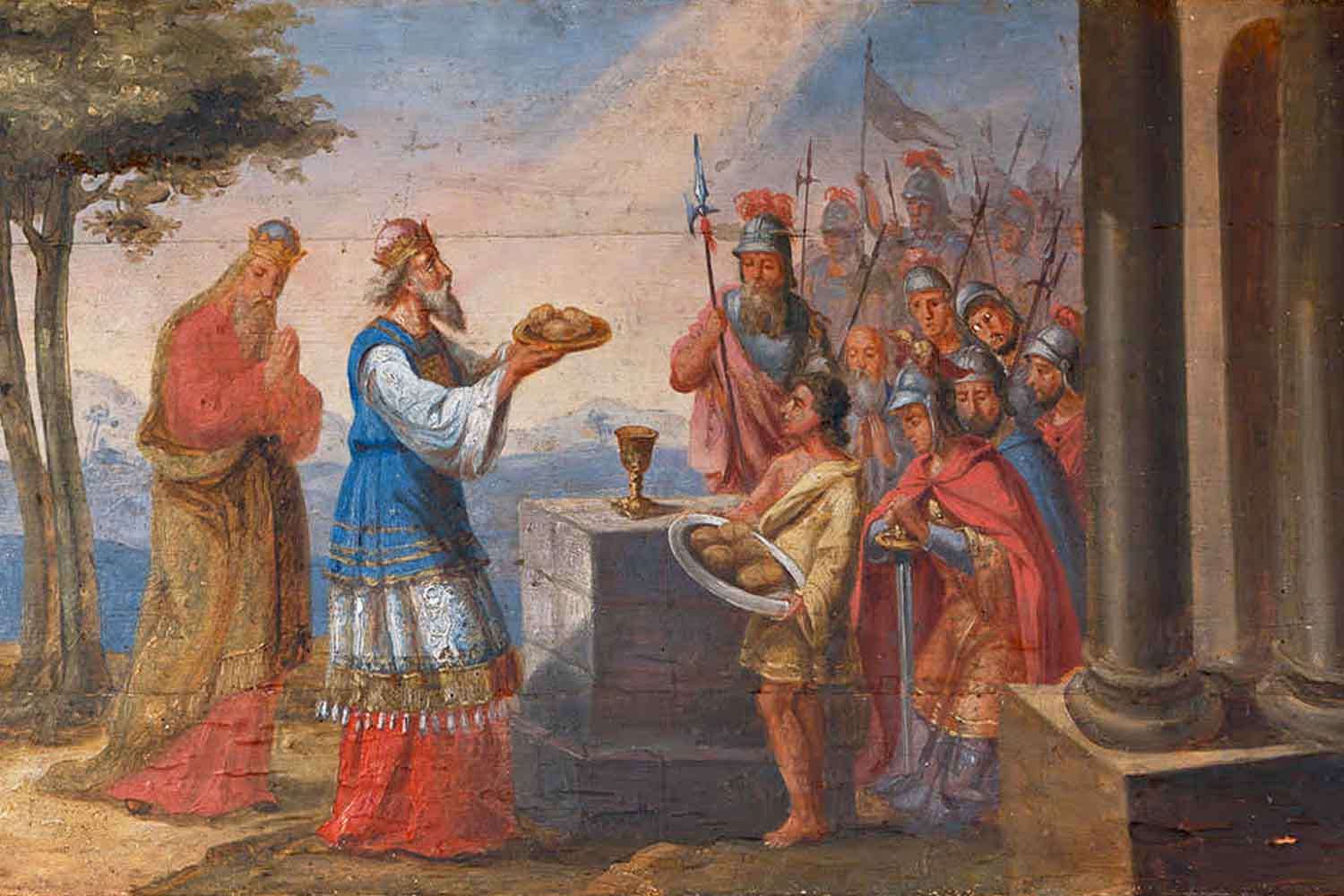 A picture of Melchizedek's offering, which previously stood on the old altar, hangs at the entrance to the bell tower.
A picture of Melchizedek's offering, which previously stood on the old altar, hangs at the entrance to the bell tower.
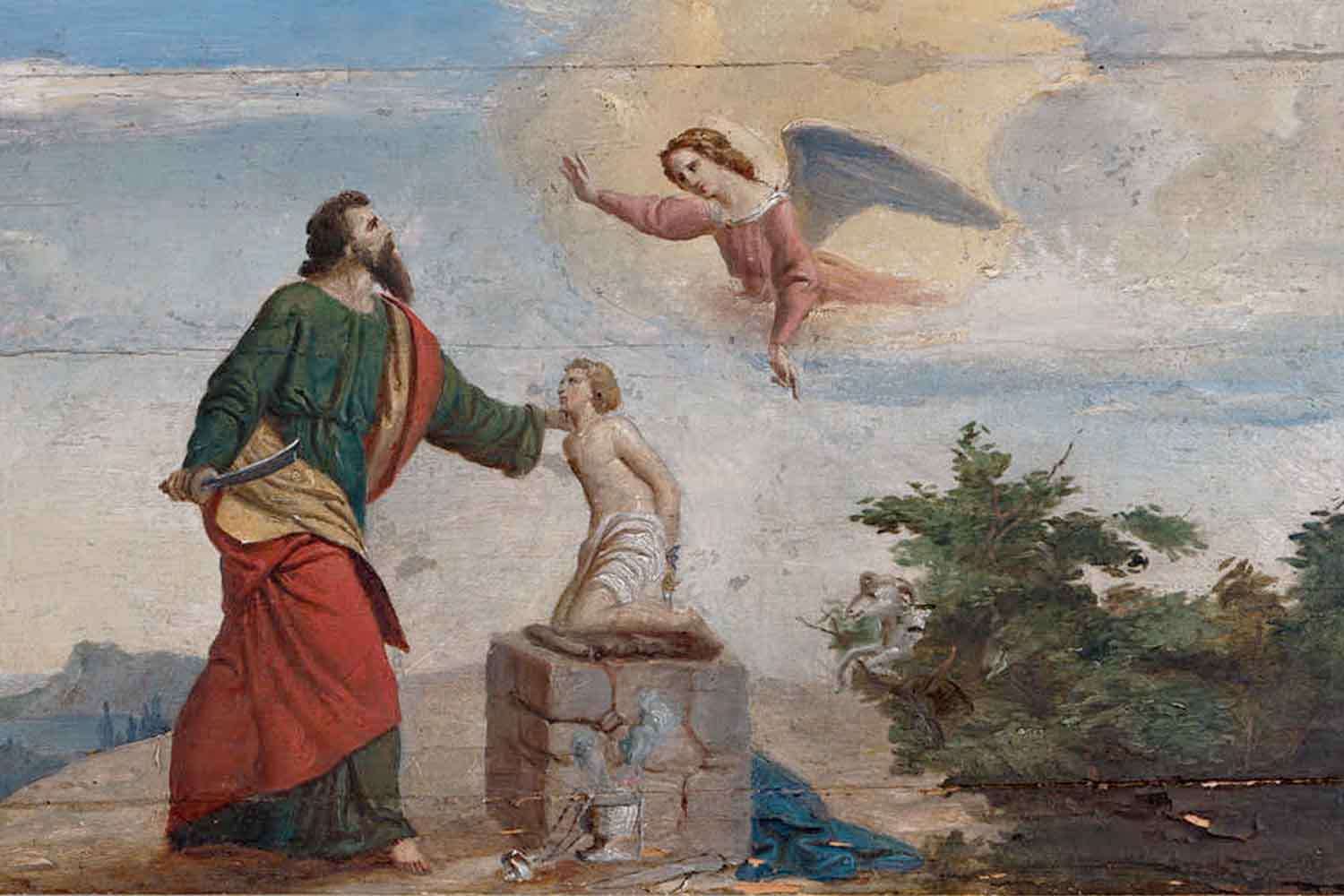 Above the entrance to the sacristy is a painting of Abraham and Isaac (Test of Faith), which previously stood on the altar.
Above the entrance to the sacristy is a painting of Abraham and Isaac (Test of Faith), which previously stood on the altar.
 At the entrance to the chancel there is a picture of St. Job and his friends Eliphaz, Bildad, Zophar, and his critic Elihu.
At the entrance to the chancel there is a picture of St. Job and his friends Eliphaz, Bildad, Zophar, and his critic Elihu.
In 1966 the organ was renovated in the Jenko organ workshop in Ljubljana.

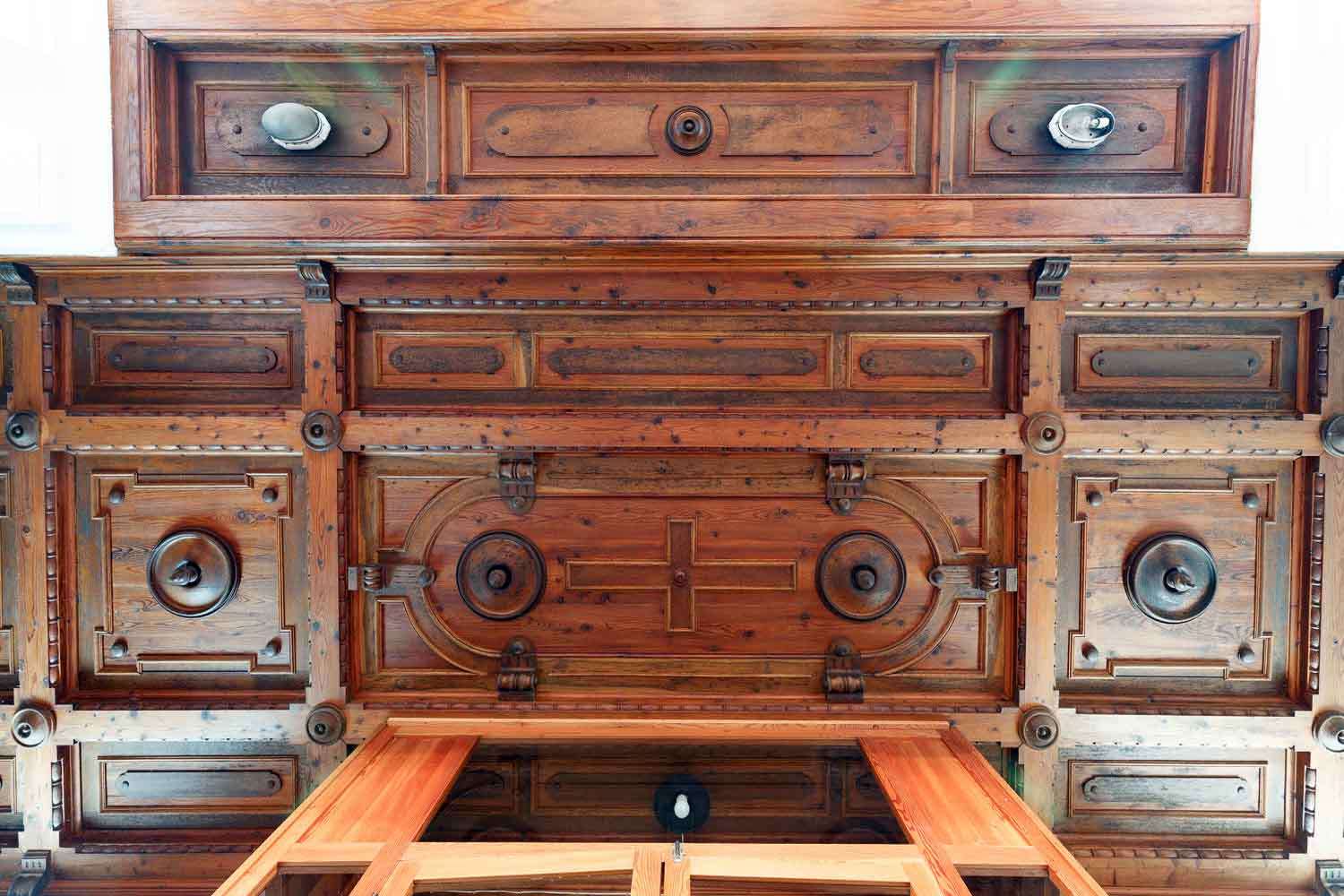 The ceiling of the chancel is somewhat older. It was made in 1903 by master carver Žumer.
The ceiling of the chancel is somewhat older. It was made in 1903 by master carver Žumer.
 The ash pews were made in 1857 by Andrej Markelj (vulgo Trpinc), a carpenter and carving expert from Bohinjska Bela.
The ash pews were made in 1857 by Andrej Markelj (vulgo Trpinc), a carpenter and carving expert from Bohinjska Bela.
 The sacristy door with a lock dating from 1853, hand-made by the priest and master metal craftsman Vinko Keršmanc.
The sacristy door with a lock dating from 1853, hand-made by the priest and master metal craftsman Vinko Keršmanc.
The exterior façade is adorned by a statue of Christ, the Prince of Peace, erected as a
permanent monument to the sufferings of World War I and as a call to peace. The priest
Martin Drolc had the statue made after he returned from his mission. The plan for the
statue is the work of Ivan Vurnik and it was sculpted by Ivan Resman from Mošnje (the
statue is 2.5 metres high and weighs 1,100 kilogrammes).
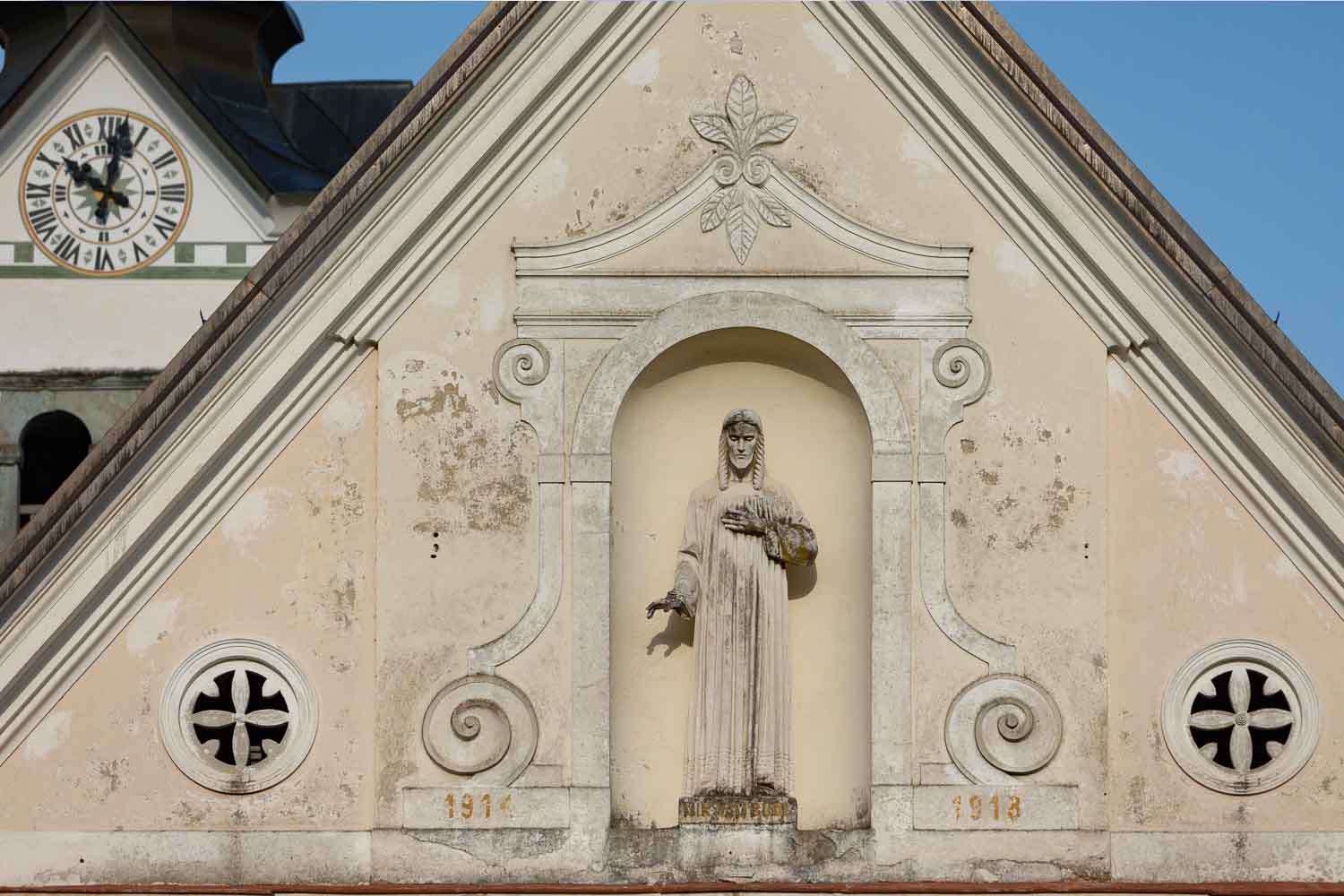
A Christogram surrounded by stars, the Sun and the Moon conveys a meaning that Christ is the centre of all human history. The Christogram, made of copper and gold plated, is the work of the metal craftsman Ivan Kregar from Ljubljana (commissioned by the priest Martin Drolc).

